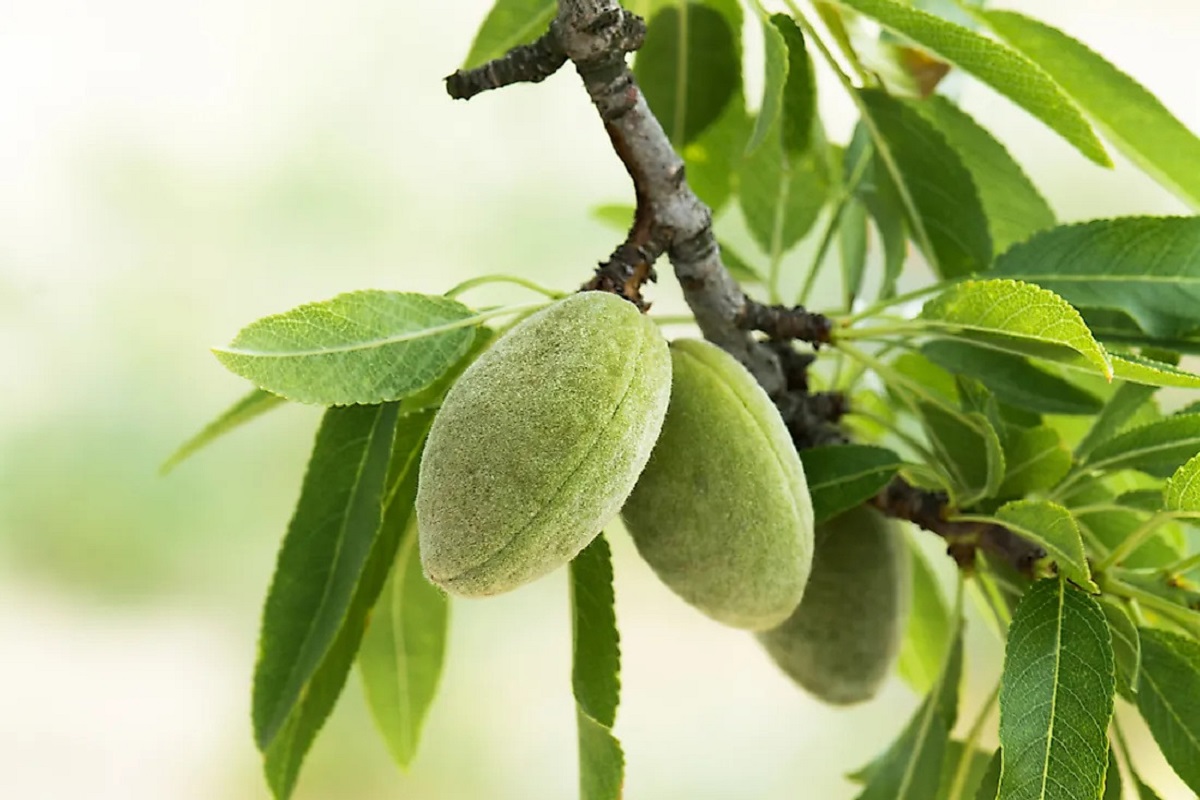Where Do Almonds Come From? Complete History Of Almond
Where Do Almonds Come From? Almonds are a fascinating and essential part of agricultural history. It is used as a delicious and versatile snack. Every year, the popularity of Almonds grows, and new products are introduced, including almond milk and almond butter. The origin and cultivation practices of almonds are deeply rooted in history, and they have a global presence today. Almonds are mentioned in everything from Greek mythology to the bible. Have you ever thought about how almonds are cultivated or where they are grown?
In this article, we are going to describe Where Do Almonds Come From, their cultivation, harvesting processing, and significance in different cultures.
The Origin Of Almonds

Almonds are seeds of a fruiting plant named Prunus dulcis and are believed to have originated in the region of Eastern Mediterranean and Central Asia. They are one of the earliest cultivated tree nuts in the world, dating back thousands of years. Almond trees are small to medium in size and belong to the Rosaceae family, which includes fruits like plums, cherries, and apricots. The name almond comes from a common title of tree species and is used to identify the edible seeds found in the fruit from the tree.
How Do Almonds Grow?
Almond trees need specific climatic conditions to grow and grow well in regions that have mild, wet winters and hot, dry summers. Currently, California is considered the largest producer of almonds globally. Other than that, Spain, Australia, and other Middle Eastern countries are also known for their almond cultivation.
Almond trees typically have a height of 15 feet and have white-pinkish aromatic flowers that are pollinated by honeybees. Almond trees bloom in early spring, which not only look visually stunning but also a great source of nectar for pollinators, especially for honey beesEffective pollination is essential for successful almond crops.
These flowers grow into a fruit called drupe and resemble plum or peach. The drupe fruit consists of a small pit in the Middle that is exposed when the fleshy exterior dries and splits open. This pit is harvested manually or through machines and prepared for consumption.
Harvesting Of Almonds
The harvesting of almonds is a labor-intensive process. After the flowers have been pollinated and the petals fall, the almond fruit begins to develop. This fruit, which starts as a green, fuzzy hull, hardens and eventually splits open to reveal the almond shell inside. That is when the almonds are ready to be harvested.
Almond harvesting typically occurs from late summer to early autumn. Harvesting methods include shaking the trees to loosen the almonds or using mechanical shakers. Once the almonds fall to the ground, they are collected and transported for processing.
Processing Of Almonds
After harvesting, almonds undergo several processes to remove the outer hull and shell. The outer hull is typically discarded, and the inner shell contains the edible almond kernel. The kernels are carefully removed from the shells to produce the familiar almond nut we consume.
What Are The Different Types Of Almonds?
Almonds can be categorized into two main types:
Let’s explore these types of almonds.
1. Sweet Almonds
Sweet almonds are the most common variety, readily available in supermarkets and often enjoyed as snacks or used in recipes alongside peanuts, walnuts, and cashews.
2. Bitter Almonds
On the other hand, bitter almonds should not be consumed like sweet almonds due to their high amygdalin content, which can be toxic to humans. While bitter almonds closely resemble sweet almonds in appearance, they require a distinct process to be made safe for consumption. Typically, bitter almonds are not used for snacking or baking as sweet almonds are. Instead, they are primarily used for extracting oils that find applications in medicine, liquor production, and select baked goods.
What Are The Health Benefits Of Almonds?
Almond is a nutrient-rich nut, and it offers numerous health benefits, some of which are as follows:
1. Massive amounts of Nutrients
Almonds are edible nuts that are rich in nutrients. It contains fiber, protein, healthy fats, Vitamin E, magnesium, manganese, and a decent amount of Vitamin B12, copper and phosphorus. However, it is important to remember that our body can not absorb 6% of the fats present in almonds because these are inaccessible to digestive enzymes.
2. Source Of Antioxidants
Almonds are an excellent source of antioxidants, mainly found in their skin, which can help protect your cells from oxidative stress, inflammation, and diseases like cancer. Eating almonds daily, up to 2.25 oz, has been shown to reduce markers of inflammation in numerous studies. With their skin removed, Blanched almonds may have lower antioxidant capacity, potentially limiting their anti-inflammatory benefits.
3. High In Vitamin E
Vitamin E, a group of fat-soluble antioxidants, protects cell membranes from oxidative damage. Almonds are an excellent source of vitamin E. Although studies suggest a connection between higher vitamin E intake and reduced risk of heart disease, cancer, and Alzheimer’s disease, further research is required for definitive confirmation.
4. Controls Blood Pressure
Almonds, rich in magnesium, can contribute to reduced blood pressure levels, a crucial factor in preventing heart attacks, strokes, and kidney problems. A magnesium deficiency is closely associated with high blood pressure. Numerous studies suggest that magnesium supplementation can effectively lower blood pressure, even in individuals without hypertension or those with existing chronic conditions. Including one to two servings of almonds in your daily diet can help you achieve the recommended daily magnesium intake, potentially benefiting your overall health.
5. Help In Maintaining Blood Sugar Level
Nuts are low in carbs and high in healthy fats, protein, and fiber, which makes them an ideal choice for individuals with diabetes. Almonds, in particular, offer a significant amount of magnesium, a mineral crucial for over 300 bodily processes, including blood sugar regulation. Research indicates that many individuals with type 2 diabetes have a magnesium deficiency. Adequate magnesium intake is associated with a reduced risk of type 2 diabetes and improved blood sugar control in people with diabetes.
6. Reduce Cholesterol Level
Elevated low-density lipoproteins (LDLs), often called “bad” cholesterol, pose a well-established risk for heart disease. Diet significantly influences LDL levels, and research indicates that almonds may effectively reduce LDL cholesterol.
In a 6-week study involving 107 participants at high cardiovascular risk, a diet comprising 20% of calories from almonds led to an average decrease of 9.7 milligrams per deciliter (mg/dL) in LDL cholesterol levels.
7. Effective For Weight Loss
Nuts are rich in nutrients that your body finds challenging to digest, with approximately 6% of their calories going unabsorbed. Some evidence even suggests that consuming nuts can slightly boost metabolism. It makes nuts valuable to a successful weight loss regimen backed by solid human research.
In a comprehensive analysis of 64 clinical trials and 14 meta-analyses, almonds stood out as the only nut that displayed a modest but noteworthy reduction in body weight and fat mass.
Are Almonds Nuts?
According to the definition of USDA, Almonds are not classified as nuts. The definition says that nuts are single-seeded fruits having a high oil content and are enclosed in solid or leathery outer layers. As almonds grow in the Middle of fleshy fruits, they are not classified as nuts.
Conclusion: Where Do Almonds Come From
The summarize of Where Do Almonds Come From is that Almonds are a remarkable and essential part of agricultural history, evolving from their origins in the Eastern Mediterranean and Central Asia to becoming a global culinary staple. Their cultivation involves careful attention to climate, pollination, and harvesting techniques. Almonds are classified into two main types: sweet and bitter, each with distinct uses and characteristics.
Almonds offer many health benefits, including being rich in nutrients, antioxidants, and vitamin E, all of which contribute to their protective properties against oxidative stress and various diseases. They can help control blood pressure, maintain blood sugar levels, and reduce cholesterol, making them an ideal choice for a healthy diet.
It is important to note that while almonds are often referred to as nuts, they do not fit the USDA’s strict definition of nuts. Instead, they are seeds found within the fruit of the almond tree.
FAQs
Almonds originate from Eastern Mediterranean and Central Asia and have a long history of cultivation dating back thousands of years. Today, the largest producer of almonds is California, but they are also grown in Spain, Australia, and other Middle Eastern countries.
Almonds can be categorized into two main types: sweet and bitter. Sweet almonds are commonly consumed, while bitter almonds contain a toxic compound and are primarily used for extracting oils for medicinal and industrial purposes.
Almond trees thrive in regions with mild, wet winters and hot, dry summers. They typically grow to about 15 feet and produce white-pinkish aromatic flowers. Adequate pollination, often aided by honeybees, is essential for a successful almond crop.
Almond harvesting typically occurs from late summer to early autumn. The almonds are ready for harvest when the fruit’s outer hull dries and splits open to reveal the almond shell inside.
After harvesting, almonds undergo several processes to remove the outer hull and shell. The kernels, the edible part of almonds, are extracted from the shells, and the outer hull is typically discarded.
Almonds offer various health benefits, including being rich in nutrients, antioxidants, and vitamin E. They can help control blood pressure, maintain blood sugar levels, reduce cholesterol, and may aid in weight management.



